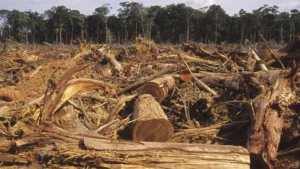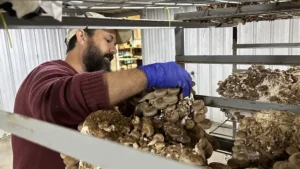Future Challenges Facing U.S. Forests and Rangelands
- July 26, 2023
- 0 comment
As we approach the next 50 years, the state of our forests and rangelands has become a topic of growing concern. A recently published report by the U.S. Department of Agriculture’s Forest Service has shed light on the current challenges facing these vital ecosystems and the potential threats they may encounter in the future. The Resources Planning Act Assessment report offers a comprehensive outlook, utilizing scientific, climate, and economic projections to identify drivers of change, assess available resources, and predict trends across all land ownerships. This article aims to explore the key findings of the report and the urgency for collective action to preserve and protect our natural treasures.
Forests and rangelands play a crucial role in supporting biodiversity, supplying clean water, and mitigating climate change. However, the assessment reveals a complex web of challenges that demand immediate attention. One pressing concern is the impact of a changing climate on disturbances, such as wildfires, insect infestations, and diseases. The report’s projections show that nine western states are already experiencing a worrying trend, where disturbances have made them net emitters of carbon. This emphasizes the urgent need for comprehensive strategies to combat climate change and promote resilient ecosystems.
With forests covering about one-third of the U.S. and providing water to approximately 83 million people, safeguarding these resources is imperative. Extended droughts and forest fragmentation threaten the health of forests and the communities that depend on them. Additionally, natural disasters pose significant risks to both ecosystems and human livelihoods. The assessment highlights the importance of addressing these challenges through proactive and collaborative approaches.
The report points to the crucial role of the Forest Service and other stakeholders in managing and preserving our natural resources. It provides valuable insights for policymakers, land managers, and researchers to develop effective policies and management plans. By using the assessment and other scientific tools, the Forest Service can chart the long-term direction for each national forest and grassland, ensuring the sustainable use of these valuable lands.
However, acknowledging the challenges is only the first step. Taking action is essential to secure the health and longevity of our forests and rangelands. The report calls for a comprehensive national effort to address the imminent risks and adapt to the changing conditions. This requires investments in wildfire management strategies, increased reforestation efforts, and the promotion of sustainable practices across ownership boundaries.
Furthermore, recognizing positive progress is crucial to inspiring further action. The assessment highlights remarkable declines in water use in many communities, attributed to the adoption of water-efficient appliances and conservation policies. Celebrating these successes can encourage further innovations and conservation efforts, ultimately contributing to the larger goal of preserving our natural resources.
Collaboration is key to tackling the multi-faceted challenges outlined in the report. Beyond the efforts of the Forest Service, stakeholders from various sectors, including government agencies, private landowners, NGOs, and local communities, must work together. By sharing knowledge, resources, and expertise, we can develop holistic solutions and promote sustainable land management practices.
The report’s insights are just the beginning. Leveraging data-driven tools, such as the Forest Service Climate Risk Viewer, will enable resource managers to assess the impacts of climate change and identify areas requiring immediate attention. Embracing innovative technology and scientific advancements is essential in fostering a resilient future for our forests and rangelands.
In conclusion, the USDA Forest Service’s recent report serves as a wake-up call for the urgent action needed to safeguard our forests and rangelands for future generations. With the challenges of a changing climate and increasing disturbances, it is crucial for us to unite and prioritize sustainable land management practices. By heeding the call to action and working collaboratively, we can ensure the health, diversity, and prosperity of our invaluable ecosystems for years to come.














Leave your comment